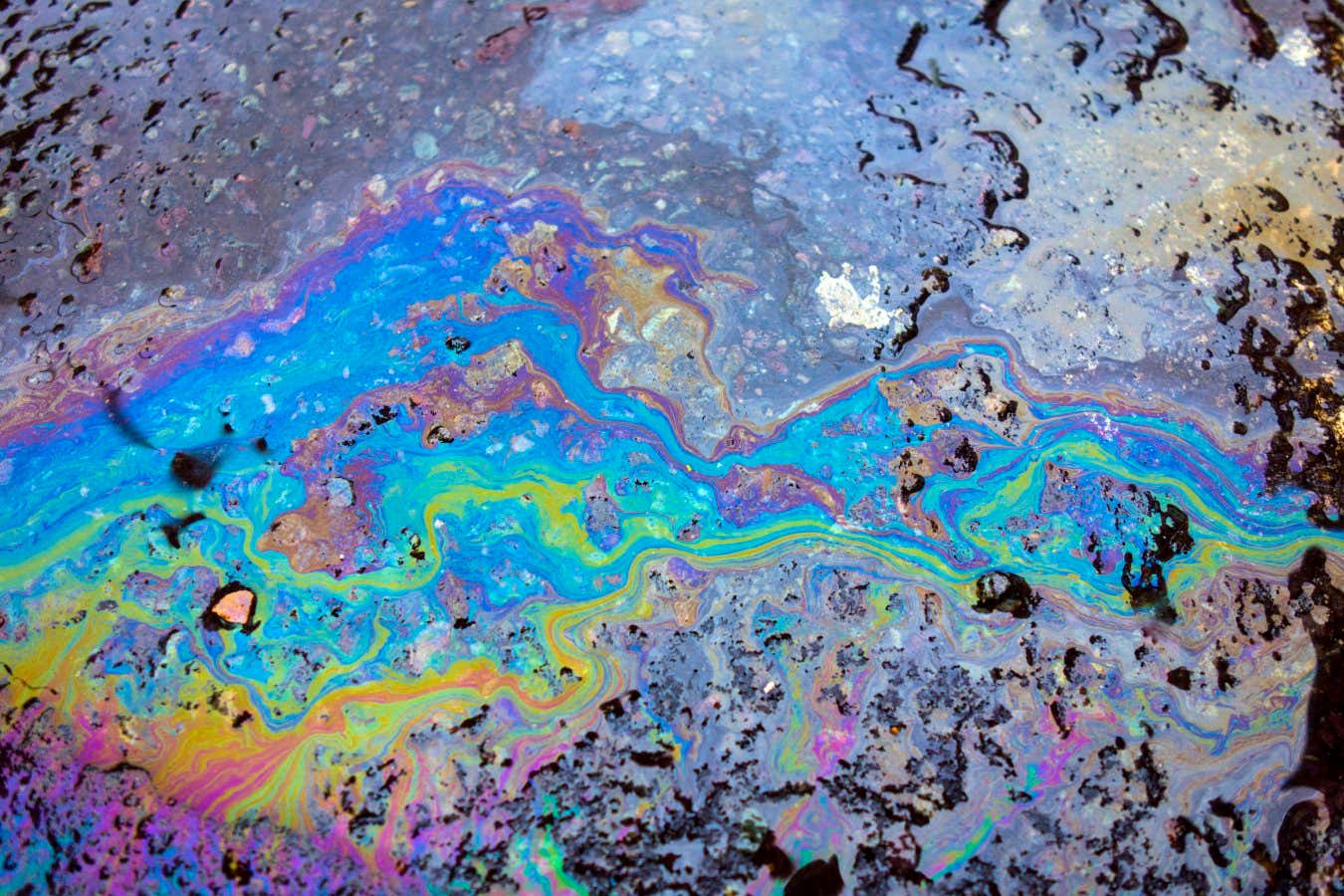Oil and water can be separated efficiently by pumping the mixture through thin channels between two semipermeable membranes
By Matthew Sparkes
7 November 2024
Oil and water are difficult to separate without leaving some impurities
Abaca Press/Alamy
Mixtures of oil and water can be efficiently separated by pumping them into thin channels between semipermeable membranes, paving the way to cheaper and cleaner ways to deal with industrial waste. Experimental prototypes managed to recover both oil and water with a purity greater than 99.9 per cent.
Various methods already exist to split such mixtures into component parts, including spinning them in a centrifuge, mechanically skimming oil from the surface and splitting them with chemicals, electrical charges or semipermeable membranes, which allow some substances through, but not others. Membranes are the simplest method, but are currently imperfect, leaving behind a stubborn mix of oily water or watery oil.
Read more
The incredible new tech that can recycle all plastics, forever
Advertisement
Now, Hao-Cheng Yang at Zhejiang University in China and his colleagues have developed a more efficient method that uses two membranes – one hydrophobic layer that allows oil to pass, and one hydrophilic layer that allows water to pass – in order to cleanly separate both.
Yang says the idea has been tried before with less-than-impressive results. This is because as oil or water is removed from the mixture, the concentration of the components changes, making the membranes less efficient.
To overcome this, the team pumped the mixture into a thin channel between the two layers. In this confined space, droplets of oil are more likely to collide and accumulate, which means they can then be removed more efficiently by the hydrophobic membrane. This, in turn, increases the ratio of water in the mixture, creating a beneficial feedback loop that ensures both clean oil and water are removed continually.
